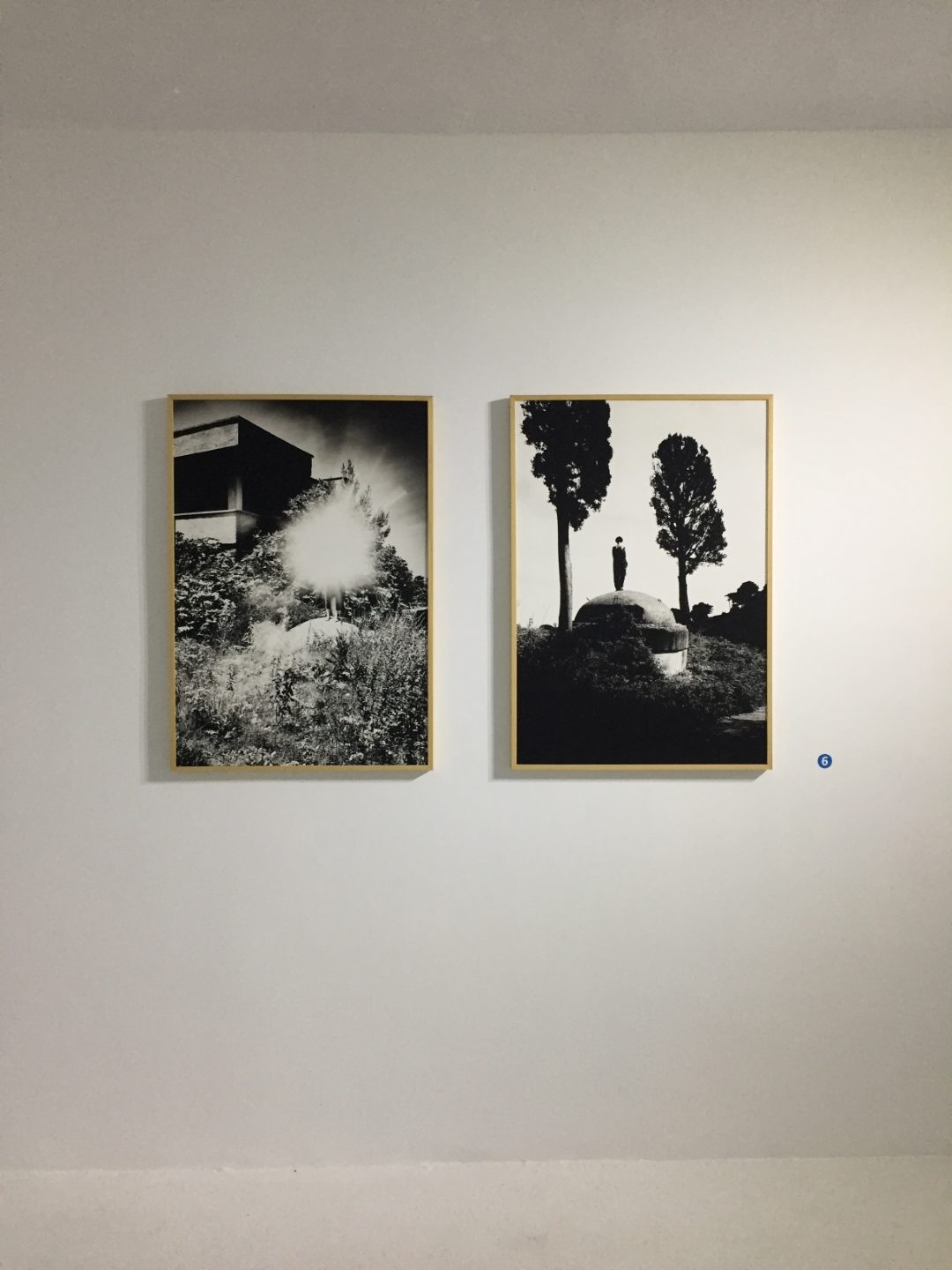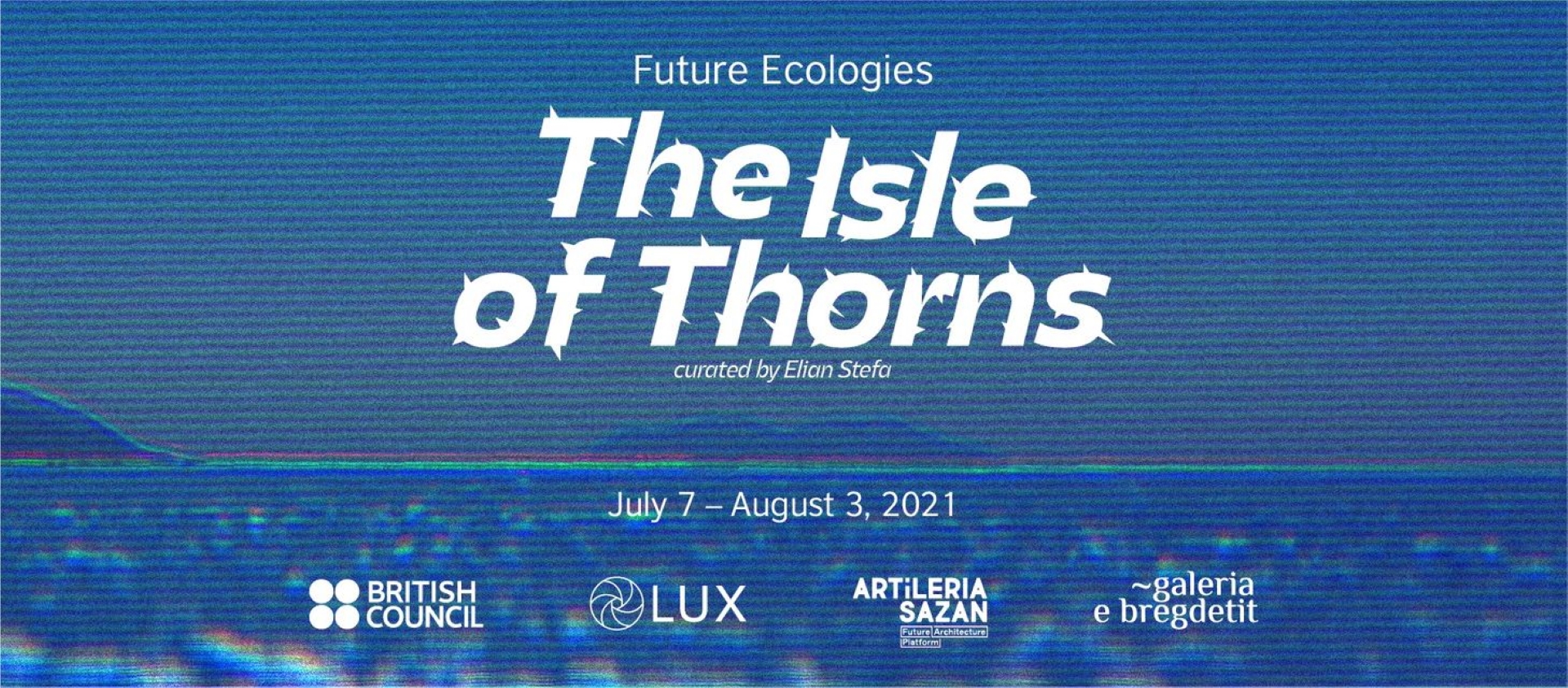During the period of July 7th – August 3rd, 2021, the exhibition The Isle of Thorns, part of FUTURE ECOLOGIES, will be open near Galeria e Bregdetit in Radhima. FUTURE ECOLOGIES is a program that belongs to “WE ARE HERE”, sponsored by the British Embassy and LUX organization in support of artists. The program speculates on a dialogue between five artists from the UK and five others from Albania and Kosovo. The program takes on the role of a manifesto on the symbolic transformation of the island of Sazan in Vlora, a space almost untouched by people until recent years.

The exhibition pamphlet introduces the visitors to a paragraph from a diary, from an unknown author and date that describes an island called Thorn Island. The name derives from the hostile nature of the island and the legend according to which those who approached it would suffer fatalities by the ruthless inhabitants of the island, or by the sharp rocks.
The exhibition was conceived by placing the island of Sazan in a parallel and dystopian reality, as one of the last remaining fortresses on planet Earth. The exhibited works will be considered as relics from the planet destroyed for unknown reasons. However, given the military nature of the island itself, the exhibition slightly suggests that the destruction came as a result of a totalitarian regime and the paranoia of the tyrant. Visitors should see the exhibition with the idea that they are looking at the remains of what planet Earth used to be.
9 artists who have participated in the exhibition have brought works realized recently or earlier in their career. Briefly, the works of each of the artists are summarized below.
Driant Zeneli – “When dreams become necessity” is a video trilogy created during the period of 2009 – 2014, which plays with the ideas of failure, utopia and dreams. Each of the films where the artist participates in extreme sports to fulfill impossible achievements is shown on three screens. “The dream of Icarus was to make a Cloud” shows the artist attempting to create a cloud through paragliding. The second one, “Some Say the Moon is Easy to Touch” shows how the artist does bungee jumping to catch the moon on the day it is closest to Earth. The third video “Don’t Look at the Sun While You’re Expecting to Cross It” shows the artist as he crosses the Sun after the Lovejoy comet went into perihelion in 2011.
Bedwyr Williams – “The Starry Messenger” is a fast paced film that explores stargazing, the cosmos and the place of people in it. The viewers are expected to imagine themselves as a piece of stone caught in the trap of a complex system.
Driton Selmani – “Milk of Dreams” consists of a mosaic depicting a jumping dolphin, like a jump of humanity on planet Earth, precisely before the great destruction. The work comments the human nature and the human behavior in the face of the existential danger posed by contemporary science and the fall of myths.
Anna Ehrenstein – ‘Tools for Conviviality’ is a two-part installation: the first part is a piece of clothing that hangs from the ceiling and the second part consists of its pieces spread out on the ground. The work is inspired by the book of the same title by the Austro-American philosopher Ivan Illich, who in 1973 criticized Western ideas on progress, which made human life more difficult, rather than simpler. Anna Ehrenstein along with her African collaborators uses the documentary as a speculation on existence in a post-digital and post-colonial environment, by focusing on fashion, design, writing, translation and spiritual healing.
Niku Alex Muçaj – “Kaba by Et’hem Qerimi” presents a video of the famous violinist playing the Kaba piece on the violin, standing on top of the converscene – a concrete structure located near the former train station, in the premises of the Tirana Express cultural center. The cultural center along with the converscene no longer exist, after being declared as illegal buildings they were both turned into victims of urban transition. The work comments on this post-communist transition in Albania.
Abi Shehu – “Barren” is a diptych created in 2019 as an ode to isolated lives on the island of Sazan. The shapes realized thanks to the reflection of light in the mirror focus on human nature and decompose the subject in different spaces and times.
Abi Shehu – “The Beauty of Demise” shows some pictures of jellyfish inserted in plastic bags. As an example of the danger of life on Earth, the artist plays with the idea that the danger of destruction comes not only directly from the environment, but also from the interest in cryptocurrencies and the collection of rare living things.
Uriel Orlow – “Muthi”, the title of the work is the African word for traditional medicine and in this short film of 2016 the artist documents the chain of trade of medicinal plants, from their collectors to the consumer. Traditional indigenous knowledge is endangered by modernity in becoming a means of consumption of post-colonial societies.
Louis Henderson – “All That is Solid” is a 2014 film that shows activities in illegal gold mines in Ghana, as well as electronics waste in Agbogbloshie. Visitors will see that cloud technology is not really immaterial, but closely related to its terrestrial origin.
Charlotte Prodger – “LHB” was filmed in 2017 and encouraged the artist’s research on the idea of queer rurality, based on the question of how are the lives of the LGBTQI + community members who live far from urban areas. The artist combines images stored on her phone, mainly of wild and uninhabited areas, with the flag of Northumberland and through the story she changes the destination of the flag, which symbolizes the turbulent and extremely patriarchal history of the territory it represents.
Ben Rivers – “Urth” looks like a glance into the future that will be created by ambitious scientific experiments. Narrated by a girl in the role of a scientist and filmed in 2016 near the premises of Biosphere 2 in Arizona, the film considers what such initiatives can bring in the near future and how they can affect the relationship between man and the natural world.












